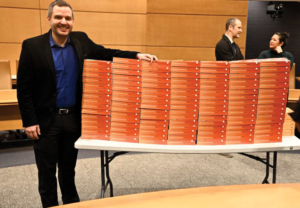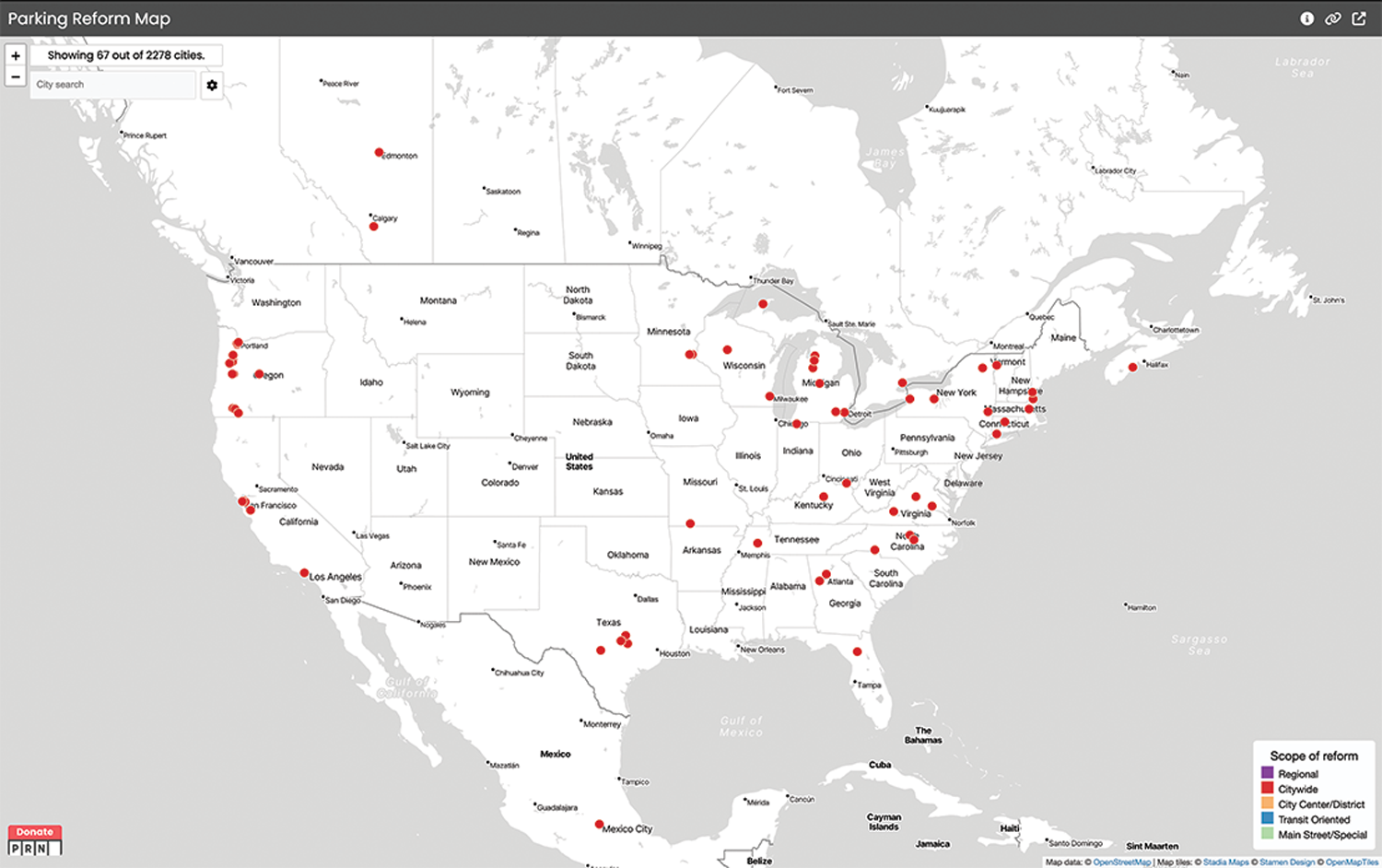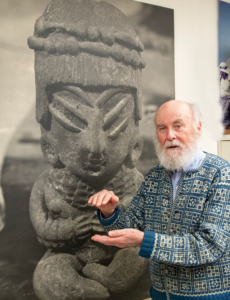By Mary Braswell
In 1970, UCLA began sending PhDs in social welfare and urban planning into the world to serve as catalysts for change for a society in turmoil. Today, scholars are still drawn to UCLA Luskin as a place where research is turned into action.
“We’re known for our focus on social justice and equity,” said Professor Evelyn Blumenberg, who received her urban planning PhD from UCLA in 1995 and now chairs the doctoral program.
“Being in L.A. is a draw as well. There are so many opportunities for fieldwork and data collection here in Los Angeles.”
Not only is UCLA a top research university, it prizes collaboration across disciplines — a rich learning environment for PhD students, said Professor Todd Franke, chair of the doctoral program at UCLA Luskin Social Welfare.
Both Blumenberg and Franke stressed the importance of “mentor matching” — pairing doctoral students with diverse and highly collaborative faculty members who will stretch their capacity to think critically and systematically to solve real problems in their community.
“The quality of the scholars here, and the support for interdisciplinary work among faculty and students, is exceptionally strong at UCLA,” Franke said.
Here’s a look at four current doctoral students, what led them to UCLA Luskin, the research they have spearheaded and how their work may foster transformative change.
Taylor Reed
PhD candidate, Social Welfare
Taylor Reed remembers when her childhood career goals came into sharper focus.
At age 11, she decided she’d become a medical doctor after seeing a commercial for St. Jude’s Children’s Hospital. “It shocked me because I didn’t know that kids got cancer. And I thought, ‘That is so sad. I need to dedicate my life to helping them,’” she recalled.
“It wasn’t until I got older when I started to realize that, yes, kids die from cancer, but Black kids in particular are more subjected to things like community gun violence and incarceration,” she said. “That is our pandemic. That is our disease. That is what we are dying from.”
Reed’s desire to change that fate led her to UCLA Luskin Social Welfare, where she is one of a select few to be accepted into a fast-tracked MSW/PhD program. “I have been intentional,” she said, “because this work is urgent.”
Reed’s area of study lies at the intersection of race, housing and incarceration — in particular the policies that keep young Black adults from successfully reentering society after serving time.
“The first thing that you think of when you leave prison or jail is, ‘Where am I going to sleep?’
“You’re not necessarily thinking of a job. You’re not thinking of mental health. You’re thinking about where you’re going to sleep,” she said.
Policies in place around the country make it difficult for people with past convictions to find a stable place to live, but fair chance housing ordinances are now on the rise, with the aim of dismantling those barriers.
Reed researches how these ordinances are being structured and enforced, who stands to benefit the most, and how to educate and empower housing applicants who face discrimination.
Along her academic journey, Reed says she has been buoyed by parents who met in law school and always made education a priority, by the work ethic of her Jamaican ancestors, by a boyfriend who acts as a sounding board for her work, and by her incredibly diverse and supportive cohort of fellow scholars.
Reed has made the most of UCLA’s opportunities, conducting research for the Initiative to Study Hate and the BRITE Center for Science, Research and Policy. She also joined the Hip Hop Scholars Working Group, which bridges her interests in research and music.
Her first opportunity to work closely with top UCLA faculty came in 2016 as a New York University undergraduate with plans to spend the summer in Los Angeles. Reed sent a cold email to UCLA’s Vickie Mays, a noted professor of psychology and public health, asking if she could use some research help. Mays said yes and Reed joined a project centering on incarceration and the Black community, the seeds of her current scholarship.
“That has been something I’ve kept close to my heart,” she said. “I do this scholarship for people who are impacted by incarceration and particularly the Black community, which has struggled since we were brought to this country to make things easier for the next generation to come.”
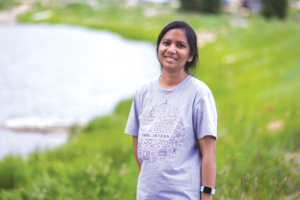
Fariba Siddiq
Fariba Siddiq
PhD candidate, Urban Planning
From Bangladesh to Utah to Southern California, Fariba Siddiq has studied the vastly different ways that people move from place to place.
She grew up in Dhaka, one of the densest cities on the planet, where only a fraction of the population owns private cars, and witnessed the perils, particularly for women, of crowded buses and trains.
As a master’s student at the University of Utah, she experienced Salt Lake City’s enviable public transit network before moving west to car-centric Los Angeles to join the urban planning PhD program at UCLA Luskin.
Along the way, Siddiq has made it her mission to identify planning choices and policy decisions that could ease the hardships endured by travelers with limited resources.
“One of the reasons I came to UCLA is its focus on transportation equity, on how to make things more equitable and just, and what that means in the international context,” she said. “I’ve seen systems that are falling apart, and I want to help make things right.”
Much of Siddiq’s work in the doctoral program and as a graduate student researcher with the UCLA Institute of Transportation Studies has focused on gender and mobility.
Siddiq won a scholarship to study how women in Dhaka and Los Angeles navigate ride-hailing amid concerns about safety and security. She worked with the World Bank to help develop a tool that could inform gender-conscious transportation policies across the globe.
Her dissertation assesses COVID-19’s long-term impact on travel patterns. How should the changing nature of work — more opportunities for flextime, hybrid schedules and the like — be factored into future transportation decisions and investments?
Transit officials and regional planning agencies rely on this type of evidence-based forecasting.
“None of it would have been possible without the support of my professors,” both personally and professionally, Siddiq said. “They have inspired me and encouraged me.”
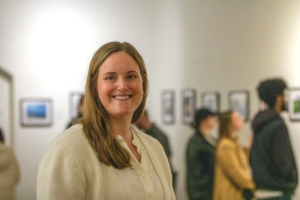
Kate Watson
Kate Watson
PhD candidate, Social Welfare
The images lining the art gallery at UCLA’s Kerckhoff Hall told a deeply personal story.
Taken by young people who had spent time in foster care, the photographs captured moments in time intended to offer a glimpse into the artists’ experiences in the system.
On a rainy Monday evening in January, a large crowd lingered over images of street art, family portraits, pill bottles, a gray cat — all part of the “Fostering Photovoice” exhibit spearheaded by Social Welfare PhD candidate Kate Watson.
“Photography is a very powerful medium,” Watson said. “I knew of photovoice as a research method, and over time the idea evolved of working with foster youth to capture their experiences and give them a voice in a creative way.”
The project tapped into many of Watson’s strengths and interests. From a young age, she has volunteered as a Big Sister and with other organizations helping youth. While working as a manager of nonprofit and for-profit organizations, she became certified as a Court-Appointed Special Advocate, providing one-on-one guidance for children in foster care.
“It’s a volunteer position, but it gave me a clear understanding of how that system worked and what the pain points were,” she said. “A lot of information is kept from different people, from birth parents, foster parents, the schools.
“Foster care and foster youth are really where my heart is, so I was looking at that and asking, ‘How can I really make an impact on this system?’”
That question led Watson to UCLA Luskin Social Welfare.
“I wanted to go to the best program I could, one that didn’t just focus on clinical work but also included macro perspectives and research methods,” said Watson, who also earned her MSW at UCLA.
Her overarching goal is to help any organization — schools, courts and government agencies, among others — become more supportive and caring, and to reduce the chance they will retraumatize people who need their help.
To that end, Watson created a trauma-informed climate survey that organizations can use to make healthy changes. It’s centered on a trusting and transparent ethos in the workplace, at every level, she said.
“In order to create a safe environment, both physically and psychologically, you need to be able to see people in their entirety and for the strengths they bring to the environment and not just the deficits.”
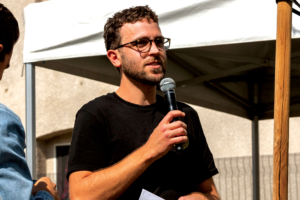
Gus Wendel
Gus Wendel
PhD candidate, Urban Planning
Understanding the complexities of urban space requires a spirit of openness and an eye for aesthetics.
That’s the creative ethos that drives the research goals of Gus Wendel, candidate for the PhD in urban planning.
For Wendel, this means leaving the library, lab or studio and venturing out into public spaces, viewing the city with a fresh eye and connecting with its people.
UCLA offers ample opportunities to do just that. As he earned his MURP in 2017, Wendel became involved with the Urban Humanities Initiative at UCLA’s cityLAB and now runs the program. Since then, he’s helped establish an emerging global network of urban humanists, all eager to share experimental ideas for making public spaces more livable.
And Wendel is one of the UCLA doctoral students behind the (Un)Common Public Space Group, which brings researchers, practitioners and community members together to advance spatial justice goals and simply share and appreciate the L.A. environment. At one event, a celebration of the new Golden Age Park in the Westlake neighborhood, Wendel welcomed the crowd, then took his spot playing cello with the Heart of Los Angeles Intergenerational Orchestra.
“Taking a creative, place-based approach through activities like festivals and performances is one way to connect research goals with community goals, and have greater impact,” he said.
For his dissertation, Wendel is conducting interviews and scouring historical archives chronicling West Hollywood’s incorporation in 1984 to tell a larger story about urban planning’s role in the formation of sexual space in Los Angeles.
Widely seen as the “first gay city,” West Hollywood was quick to pass nondiscrimination ordinances, beautify urban spaces and prioritize economic growth, Wendel said. But he is also unearthing planning policies that reveal entrenched gender, race and class hierarchies.
“West Hollywood consolidated a dominant gay identity, one that branded itself as inclusive of all LGBTQ people,” he said. “I’m interested in planning’s role in shaping this identity, and the degree to which the process was inclusive of diverse gender and sexual minority communities.”
As he looks toward the future, Wendel plans to continue research that makes the planning profession more inclusive of diverse LGBTQ+ populations. And he hopes to spread the message that artistic approaches more commonly practiced in the humanities can transform the field of planning.
“My goal is to support the next generation of planning scholars and practitioners interested in advancing justice, and share creative methods to study and shape the city.”



